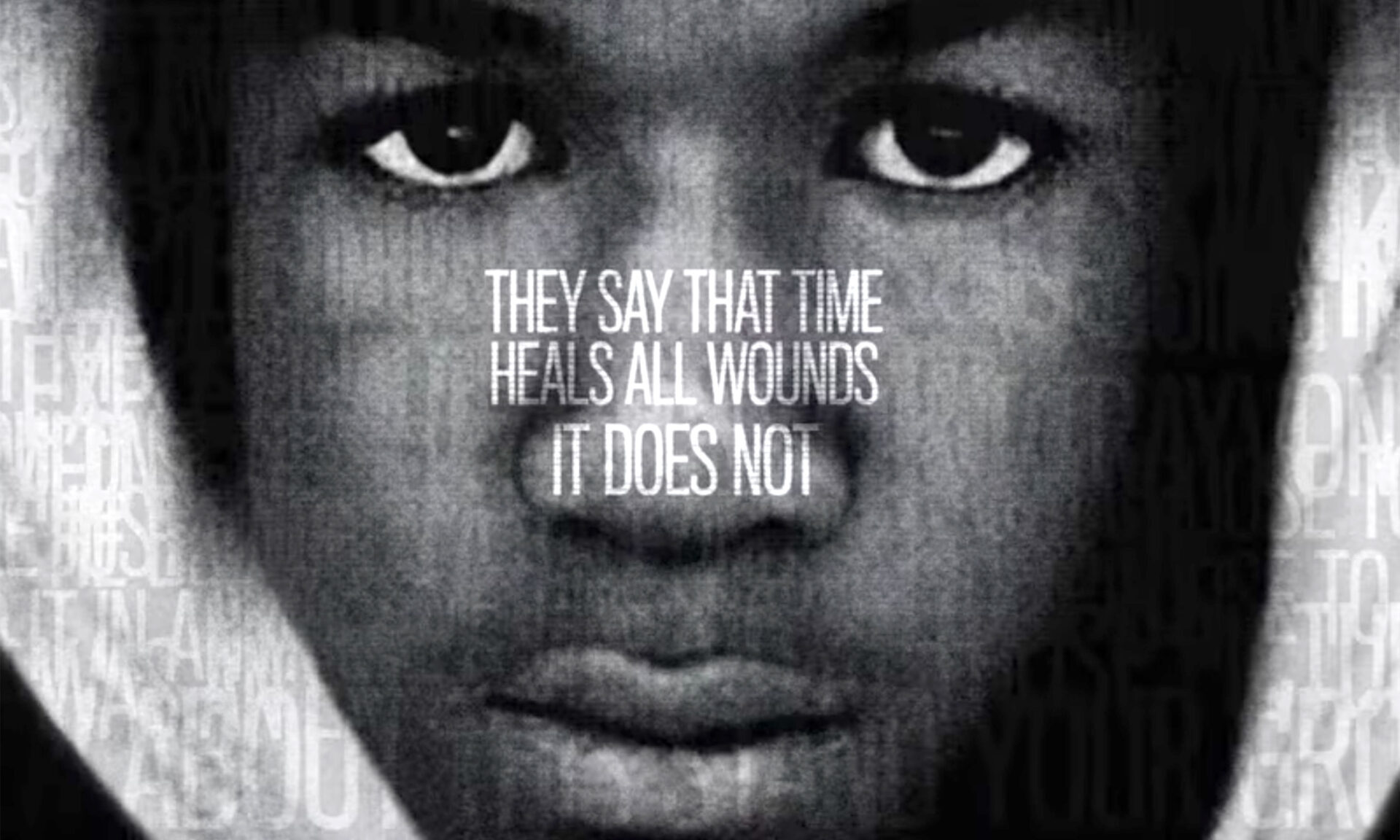What does safety really mean in America?

by Porshéa Patterson-Hurst, The Opportunity Agenda
Donning a military style buzz cut and mullet reminiscence of a G.I Joe action figure, Mike Prindiville glares with intensity into the camera. In his left hand, he grips a large black handgun.
In his right, he holds his daughter, just six months old.
Mike, of Dallas, Texas, was just one of the hundreds of gun owners profiled by photographer Zed Nelson for his now critically acclaimed project, Gun Nation. To commemorate the project’s 20-year anniversary, Nelson sat down with some of the individuals he photographed to ask them about their perception of the images two decades later. While the mullet is gone, Mike’s intensity remains, alongside a resolute commitment to the values he feels the image reflects. For Mike, those values are power and protection. As he states, his gun and the picture reflect his “freedom.”
Mike’s sentiments, as well as the other gun owners profiled by Nelson, are eye-opening in their similarity. Each identified as Christian, lived in a predominantly white rural or suburban area, and followed an almost identical script. That is, guns are not about violence or death, but the very symbol of the creation and maintenance of safety. They are the “good guys” protecting their communities.
It would be an understatement to say that their expression of freedom and safety is not equally enjoyed by all Americans. The most glaring example of the divide between Mike’s vision of safety and the reality is seen in the dozens of cases of people of color and other marginal groups killed in the name of public safety.
Indeed, today marks the five-year anniversary of the acquittal of George Zimmerman for the murder of Trayvon Martin, a ruling that exemplifies precisely this dynamic.
Zimmerman, and many other Americans, relentlessly tie their pro-gun ownership arguments to a hyper-vigilant need to protect themselves, their property, and their families. To avoid being called racist, many who espouse this ideology refrain from defining exactly whom they need to protect themselves from. Yet, in Rest in Power: The Trayvon Martin Story, we see this veneer quickly recede when white supremacists take up Zimmerman’s cause.
The various ways in which certain groups of Americans attempt to define and enforce their personal and community safety, as well as define who is “good” or “bad” is far from surprising. At the root of nearly every political debate in the United States is an underlying conflict about how safety is defined, and which segments of the population are entitled to it. From gun safety and police brutality, to the current debates surrounding sanctuary jurisdictions — this conflict is continually at play.
Which begs the question: What does it really mean to be safe in America?
An analysis of recent executive orders issued by the Trump administration provides some insights into the definition of safety that largely governs American politics. In an order issued in January 2017 titled, Enhancing Public Safety in the Interior of the United States, the word “safety” appears six separate times, generally in the context of framing sanctuary jurisdictions and undocumented immigrants as a direct threat to public safety.
This framing of safety is far from new. In another executive order issued by President Roosevelt in 1942, the perceived danger posed by Japanese Americans was used as justification for the internment of roughly 120,000 Japanese Americans.
While vastly different in tone, both make eerily similar use of the term “safety” to justify the targeting of specific racial/ethnic groups. Taken together, the message is implicit but clear: Safety is the privilege to define who is dangerous. Safety is the right to use force and violence against groups deemed unsafe or potentially threatening to a white majority. This guiding definition of safety is seen throughout the history of the United States, and has become more apparent under the current Administration.
So, how do we redefine safety to no longer mean the protection of white Americans, to the social, economic, and physical detriment to communities of color?
The first step is recognizing how interconnected these debates are, and the pressing need to create a new definition of safety which recognizes the rights and humanity of all Americans.
In our upcoming series of Twitter conversations, The Opportunity Agenda will tackle the concept of safety, who the current definition serves, and how the complicity of White Americans — and those who buy into the ideology of White superiority — reinforces systemic racism.
Join us on Twitter when the docuseries Rest in Power: The Trayvon Martin Story airs on Monday nights from July 30 – September 10 on the Paramount Network and BET at 10 pm ET. Also check out more information on the chats, including a weekly discussion guide.


